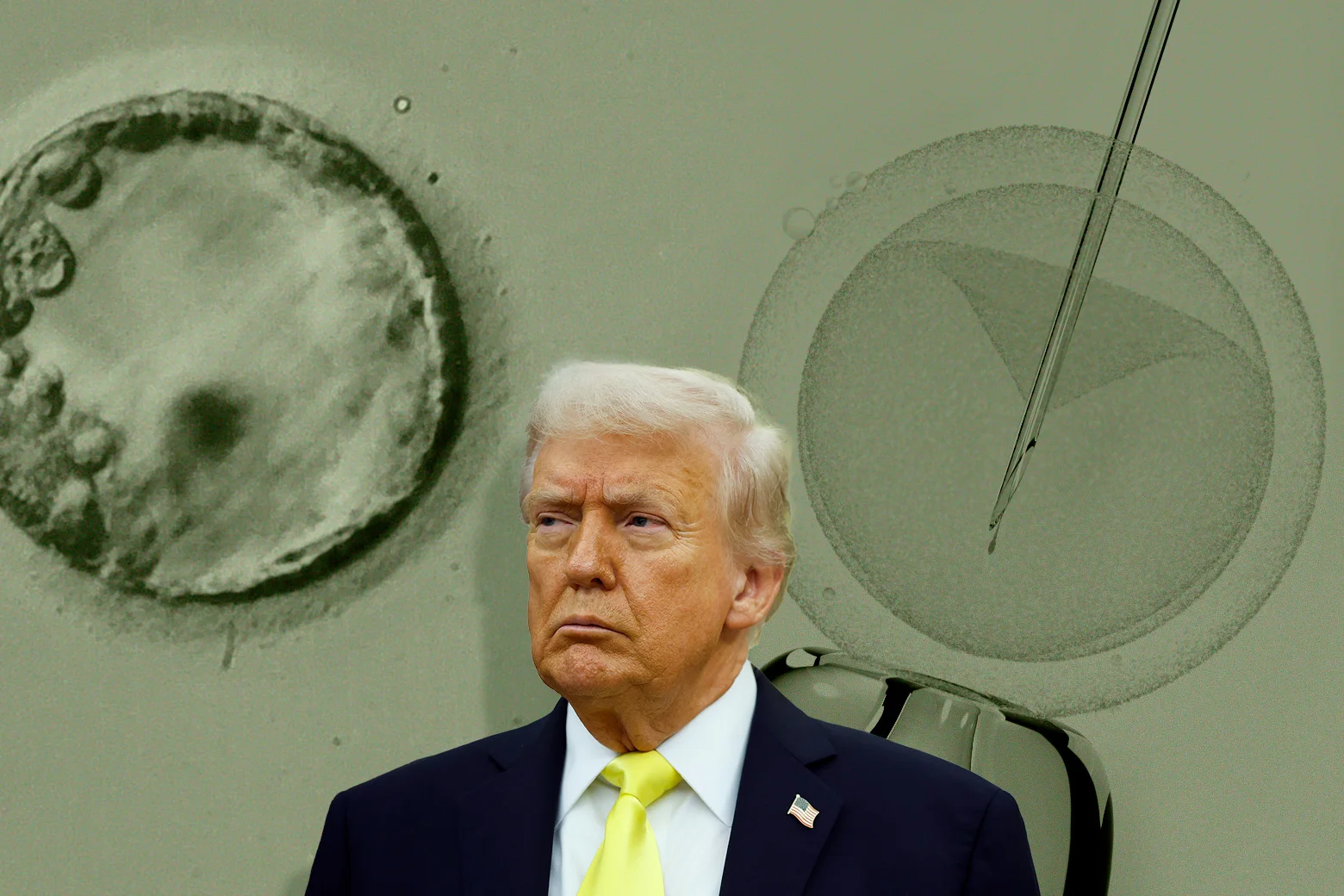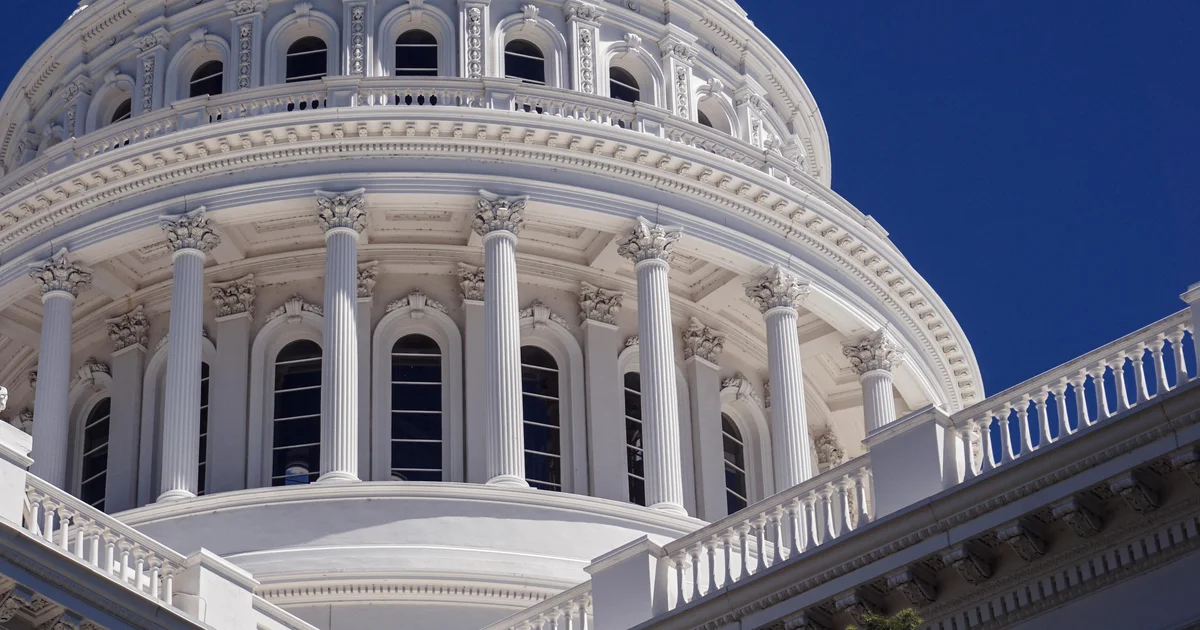Copyright Slate

Sign up for the Slatest to get the most insightful analysis, criticism, and advice out there, delivered to your inbox daily. One of Donald Trump’s splashier campaign promises was that he would make in vitro fertilization free for all Americans. “Under the Trump administration, your government will pay for—or your insurance company will be mandated to pay for—all costs associated with IVF treatment,” the president said. “Because we want more babies, to put it nicely.” After issuing a toothless executive order pledging to do something about IVF but not actually doing anything about IVF, the president has finally rolled out his plan. And despite much fanfare, the Trump IVF plan is a bit of a dud. It’s not nothing—it will modestly reduce IVF costs for some families—but it’s unlikely to meaningfully change the “Do we or don’t we” calculus for most people, and it’s nowhere near his “free” promise. It’s not even clear that the proposal will make much of a dent in costs for the families it does help. And it seems virtually guaranteed that the tiny IVF benefit on offer will not, as Centers for Medicare and Medicaid Services administrator and TV personality Mehmet Oz said, create “a lot of Trump babies.” The first prong of the Trump IVF initiative isn’t a policy at all; it’s more or less the administration’s request that companies offer IVF benefits, just as some might provide dental plans to their employees. There is no mandate that companies offer IVF coverage. There is no penalty if they don’t. There are no government subsidies to offset the costs. There’s just the president saying, “Hey, guys, you should do this,” with a promise of a how-to to come. The second is a bit more substantial but still small: an agreement with a single pharmaceutical company to decrease the cost of a single IVF drug, Gonal-F. The discounted drug will be sold through the Trump-branded trumprx.gov. The name itself is an abuse of Trump’s position, but at this point the public and press alike seem to have stopped caring. “We’ll dramatically slash the cost of IVF and the treatment and many of the most common fertility drugs for countless millions of Americans,” Trump announced last week. “Prices are going way down, way, way down.” To be fair, “way, way down” is a matter of opinion. According to an estimate by Oz’s agency, patients pursuing IVF could save as much as $2,200 per cycle with the discounted drug. And although $2,200 is a significant amount, consider that a single cycle of IVF averages $15,000 to 20,000 and can cost as much as $30,000. Also, the estimated savings is as much as $2,200—meaning it will likely be far less for most people. When we’re talking about four-figure sums, $2,200 helps, but that number likely won’t make or break a person’s ability to undergo fertility treatments. That doesn’t mean it’s meaningless, and when you’re paying for exorbitantly expensive medical procedures, you’ll take any discount you can get. But a good start and a nice benefit is not the same as a life-changing policy that will lead to “many more beautiful American children,” as Trump pledged. The IVF policy may not be groundbreaking, but it is perfectly Trumpian: a lot of big talk and bravado, without much in the way of substance behind it. The president and his administration are boasting that this benefit will fuel a Trump baby boom, but there’s no evidence that a single $2,200 drug is all that’s standing in the way of a fertility rate spike. With the IVF price tag being what it is, it’s frankly hard to imagine that this benefit will make the difference between getting IVF or skipping it for more than a tiny number of families, if any at all. But as with so much of what Trump does, the result isn’t the point; the performance is. The president wants to be lauded and applauded, and apart from a tiny number of issues he genuinely seems to care about (kicking immigrants out of the country, imposing stiff penalties on enemies real and perceived, tariffs), he mostly wants to tell voters what he thinks they want to hear. This desire for approval and weakness for flattery make him highly malleable and easily influenced; it’s why his policy announcements are so confusing and shift so often. Making very loud promises allows him to give the impression of taking action, even if he changes his mind or fails to follow through. What Trump says—and voters hear—is “Trump is the first president to take meaningful action on IVF.” That the action isn’t all that meaningful doesn’t really matter. And here again he seems to be playing both sides when it comes to reproductive rights and health. Trump has cobbled together a novel coalition. He remains a darling of the anti-abortion right—handing it Supreme Court justices that overturned Roe v. Wade and stripped American women of our constitutional right to abortion apparently has a long tail of goodwill—but seems to have little personal commitment to the issue himself. And he’s also now beholden to a motley crew of tech bros, pronatalists, and young men, many of whom are concerned about falling birth rates, a number of whom want children themselves but worry about costs or opportunities, and some of whom are gay and therefore likely reliant on IVF if they want to reproduce. The bro-natalists, and even many pronatalist abortion opponents, generally support IVF; some on the tech side also favor significant genetic testing to essentially maximize embryos not just for health but for things like intelligence and other characteristics, walking toward what feels to many on the anti-abortion right—and some on the left—like a designer-baby dystopia. On the anti-abortion right, IVF is controversial, but Trump seems to get a special dispensation. There really is no way to square the now nearly ubiquitous anti-abortion view that life begins at conception with the reality that in many IVF procedures, more embryos are created than a couple will use and the leftover ones are eventually discarded. (Some people donate their embryos to other couples, but they are a small minority.) It is also common in IVF to screen embryos for genetic defects before implanting them and to discard those that are unlikely to result in a pregnancy or live birth. It’s hard to know exactly how many embryos are discarded through this process every year, but some estimates put it at well over a million—a significantly higher figure than the number of abortions. One would think that this would be a five-alarm fire for the anti-abortion movement, which claims that each of these embryos is a life equivalent to a born child, and certainly to an aborted fetus. And yet we don’t tend to find “pro-life” protesters outside fertility clinics; we haven’t seen successful legislation banning IVF, although some anti-abortion extremists would certainly like to see it outlawed. When an Alabama court effectively criminalized IVF by declaring that state law asserted that life began at conception, many supposedly “pro-life” Republicans objected, Trump included. Many anti-abortion lawmakers continue to claim that life begins at conception but nevertheless support IVF, or at least ignore it—which kind of gives away the game that agitating against abortion is less about fetal or embryonic life than about controlling and punishing women. Predictably, Trump has not seen much in the way of anti-abortion blowback from his IVF pledge. A smattering of vocal anti-abortion have extremists tittered on X, but the big anti-abortion organizations have stayed largely silent. His anti-abortion supporters, and even his anti-IVF supporters, seem happy to let him have a win on this—as long as he allows abortion bans, which radically constrain women’s rights and lives, to proceed apace. That the anti-abortion movement has lined up behind the president, and continues to stand behind him, is one of the more revealing outcomes of the Trump era. It also reveals quite a bit about this latest IVF policy. If the policy were to significantly move the needle on IVF—to make it free, as Trump promised, or even reasonably affordable for most Americans—we might see bigger a “pro-life” backlash. But these groups know full well that although a small discount is nice, it’s far from a game changer. It lets Trump get some credit for supposedly expanding IVF access, while providing cover for the serious and increasingly deadly encroachments on women’s rights and lives that his presidency has wrought. Anti-abortion conservatives continue to make pregnancy much more dangerous for women in Republican-run states by banning abortion, not just making elective abortions harder to get but imperiling pregnant women’s lives when they have miscarriages or other complications. Trump’s head of Health and Human Services, Robert F. Kennedy Jr., says his agency is reviewing the safety of mifepristone, an abortion-inducing drug that has been on the market for decades, has been used and proved safe all across the world, and has a stronger safety record than Viagra and penicillin. But abortion opponents want it off the market, and because a national abortion ban is hugely unpopular, they’re going through the back door and using a specious “safety” pretext—and, so far, the Trump administration is going along with it. It’s in this context that the president is touting his IVF policy. Voters hear the White House’s own summary and conclude that he’s doing a popular thing: supporting IVF so Americans can grow their families. Anti-abortion leaders are savvier, and they hear the true thing: Trump is getting outsize credit for his very modest IVF policy, which enables his administration to position itself as moderate on abortion and in favor of expanding reproductive rights—while, in reality, the administration remains beholden to the anti-abortion movement, and American women are seeing their rights curtailed and their lives diminished.



